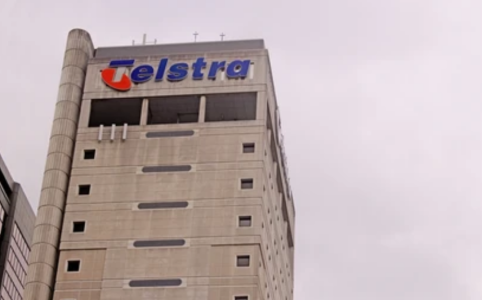Third major price hike drives customers away, time to switch providers
By
Gian T
- Replies 1
If you’re a Telstra customer, you might want to brace yourself before opening your next bill.
Australia’s largest telco has just announced yet another round of price hikes—its third since August last year—leaving many loyal customers fuming and threatening to jump ship.
With the cost of living already biting hard, is it time to reconsider your phone and internet provider?
From 1 July, most of Telstra’s postpaid mobile, mobile data, and home and small business internet plans will increase by $3 to $5 per month.
Here’s a quick look at some of the new prices:
There are a few silver linings: the Premium 100/40 speed Small Business internet tier will drop from $140 to $125, and the Ultimate (250 speed) and Ultrafast (1000 speed) plans will also see small reductions.
Starter mobile, starter NBN, premium mobile plans, pre-paid mobile, home phone, satellite, and 5G home internet plans will remain unchanged.
Telstra says the extra money will improve its mobile network, boost reliability and security, and respond to the ever-increasing demand for data as more Aussies connect smart devices at home.
The company’s group executive, Brad Whitcomb, announced an $800 million investment over the next four years to 'extend our leadership and deliver customers the most advanced, resilient and reliable mobile network in the country.'
They’re also promising new features, like satellite-to-mobile messaging, allowing customers to send and receive texts from almost anywhere in Australia—even in remote areas with no mobile coverage.
Plus, Telstra says it’s ramping up 24/7 network monitoring to help protect against scams and offering 4G backup to keep customers connected during outages.
Despite Telstra’s assurances, many long-time customers are clearly frustrated, with social media flooded by complaints.
One user, a customer for over 25 years, announced they were leaving, saying Telstra had done nothing to justify the price hikes and that as a pensioner, they couldn’t keep up.
Another described the situation as 'typical Telstra,' criticising the company for charging more without improving service despite five years of rising costs.
A third added sarcastically that it felt like only yesterday that prices had gone up again, highlighting the frequency of the increases.
It’s not just Telstra, either. Optus recently announced its own price increases of $2 to $6 per month for mobile plans, effective 4 June.
It seems the whole industry is feeling the pinch—and passing it on to us.
If you’re feeling the financial pressure, you’re not alone—many Australians, particularly those on fixed incomes or pensions, are actively looking for ways to cut back.
One of the most effective steps is to compare providers, as smaller telcos like Aldi Mobile, Amaysim, Boost, and Aussie Broadband often use the same networks as the major companies but offer better value.
Websites like WhistleOut and Finder can help you find the best deals in your area.
It’s also worth checking if your current provider offers loyalty discounts—sometimes, just the threat of leaving is enough to unlock a better deal.
Reviewing your usage can help; if you’re paying for more data or speed than you need, a cheaper plan might suit you better.
Bundling your mobile and internet services could lead to savings, and before switching, always check for hidden fees or contract conditions to avoid unexpected costs.
Telstra does have the widest coverage in Australia, which is a big plus if you live in a rural or remote area.
Their customer service and network reliability are often rated highly, and the new investments could mean better service in the future.
But for many, the constant price hikes are just too much to swallow.
In other news, Telstra's price increase for mobile plans affected prepaid customers since 27 August 2024 and postpaid customers since 22 October 2024.
Monthly fees rose by $2 to $4 across different plan levels. Premium plans increased from $95 to $99 per month, basic plans from $62 to $65, essential plans from $72 to $75, and bundle plans from $50 to $52. You can read more about it here.

Are you a Telstra customer? Have you already switched providers, or are you planning to? How do you feel about the rising costs of phone and internet services in Australia? Share your experiences and tips in the comments below—your advice could help a fellow member save money!
Australia’s largest telco has just announced yet another round of price hikes—its third since August last year—leaving many loyal customers fuming and threatening to jump ship.
With the cost of living already biting hard, is it time to reconsider your phone and internet provider?
From 1 July, most of Telstra’s postpaid mobile, mobile data, and home and small business internet plans will increase by $3 to $5 per month.
Here’s a quick look at some of the new prices:
- Mobile Bundle 25GB: $52 → $57
- Basic Plan 50GB: $65 → $70
- Essential Plan 180GB: $75 → $80
- Data Bundle 10GB: $10 → $15
- Small Plan 30GB: $25 → $30
- Medium Plan 100GB: $58 → $65 (with a data increase from 75GB)
- Basic Internet Plan 25 speed: $89 → $93
- Essential Internet Plan 50 speed: $105 → $109
- Premium Internet Plan 100 speed: $110 → $113
There are a few silver linings: the Premium 100/40 speed Small Business internet tier will drop from $140 to $125, and the Ultimate (250 speed) and Ultrafast (1000 speed) plans will also see small reductions.
Starter mobile, starter NBN, premium mobile plans, pre-paid mobile, home phone, satellite, and 5G home internet plans will remain unchanged.
Telstra says the extra money will improve its mobile network, boost reliability and security, and respond to the ever-increasing demand for data as more Aussies connect smart devices at home.
The company’s group executive, Brad Whitcomb, announced an $800 million investment over the next four years to 'extend our leadership and deliver customers the most advanced, resilient and reliable mobile network in the country.'
They’re also promising new features, like satellite-to-mobile messaging, allowing customers to send and receive texts from almost anywhere in Australia—even in remote areas with no mobile coverage.
Plus, Telstra says it’s ramping up 24/7 network monitoring to help protect against scams and offering 4G backup to keep customers connected during outages.
Despite Telstra’s assurances, many long-time customers are clearly frustrated, with social media flooded by complaints.
One user, a customer for over 25 years, announced they were leaving, saying Telstra had done nothing to justify the price hikes and that as a pensioner, they couldn’t keep up.
Another described the situation as 'typical Telstra,' criticising the company for charging more without improving service despite five years of rising costs.
It’s not just Telstra, either. Optus recently announced its own price increases of $2 to $6 per month for mobile plans, effective 4 June.
It seems the whole industry is feeling the pinch—and passing it on to us.
If you’re feeling the financial pressure, you’re not alone—many Australians, particularly those on fixed incomes or pensions, are actively looking for ways to cut back.
One of the most effective steps is to compare providers, as smaller telcos like Aldi Mobile, Amaysim, Boost, and Aussie Broadband often use the same networks as the major companies but offer better value.
Websites like WhistleOut and Finder can help you find the best deals in your area.
Reviewing your usage can help; if you’re paying for more data or speed than you need, a cheaper plan might suit you better.
Bundling your mobile and internet services could lead to savings, and before switching, always check for hidden fees or contract conditions to avoid unexpected costs.
Telstra does have the widest coverage in Australia, which is a big plus if you live in a rural or remote area.
Their customer service and network reliability are often rated highly, and the new investments could mean better service in the future.
But for many, the constant price hikes are just too much to swallow.
In other news, Telstra's price increase for mobile plans affected prepaid customers since 27 August 2024 and postpaid customers since 22 October 2024.
Monthly fees rose by $2 to $4 across different plan levels. Premium plans increased from $95 to $99 per month, basic plans from $62 to $65, essential plans from $72 to $75, and bundle plans from $50 to $52. You can read more about it here.
Key Takeaways
- Telstra customers are threatening to leave after the company announced another round of price hikes, with most mobile and internet plans increasing by $3 to $5 a month from July 1.
- Many long-term customers voiced their frustration online, saying they’ve seen repeated price rises without any noticeable improvement to service or value.
- Telstra says the price increases will allow them to invest $800 million more in their mobile network over the next four years and promise faster speeds, better security, and new features like satellite-to-mobile messaging.
- Not all plans are affected—prepaid mobile, home phone, satellite, 5G home internet and some entry-level and premium plans will stay the same or even drop in price, with some small business and high-speed tiers seeing slight reductions.
Last edited:








